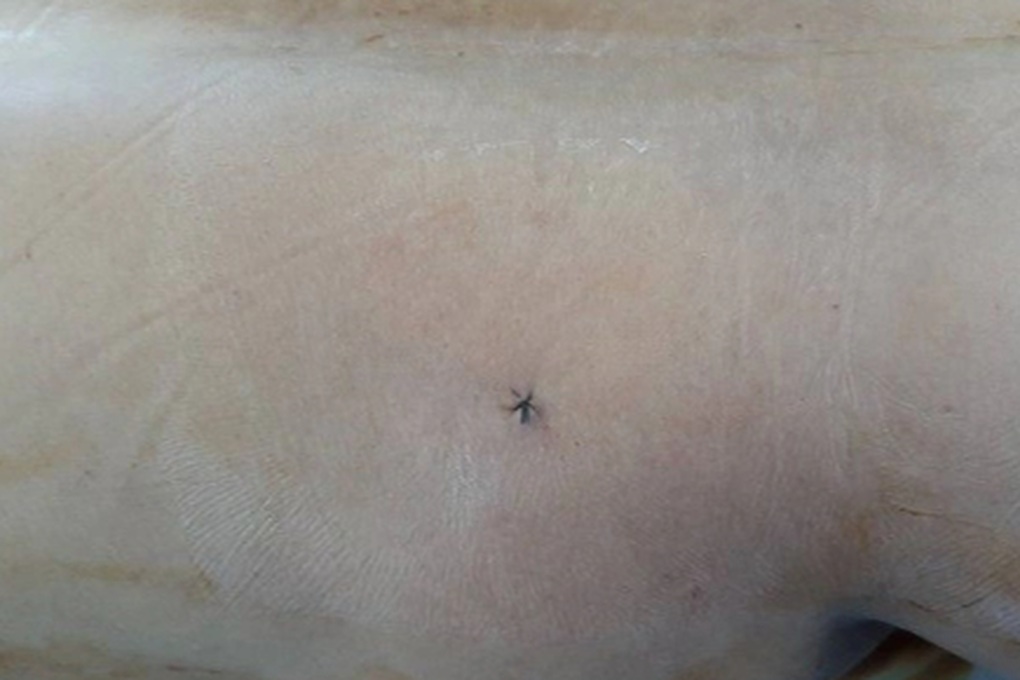Kidney stones are common in urinary tract diseases, with an incidence rate of up to 10% of the population. If not treated properly, this silent disease can cause severe pain and leave many dangerous complications.
In recent years, kidney stone surgery has made great progress, thanks to improvements in new instruments and techniques.
How many ways are there to crush stones?
In the laparoscopic era, minimally invasive techniques have replaced traditional methods such as open surgery or retroperitoneal laparoscopic surgery in the surgical treatment of renal stones.
New methods offer many benefits, such as reducing surgery and hospital stay times, reducing the need for post-operative pain medication, and helping patients return to their normal activities sooner.
Currently, there are many methods to intervene in kidney stone lithotripsy, such as extracorporeal shock waves (using external shock waves to break up stones without touching the skin), percutaneous small tunnel lithotripsy (with a small hole through the skin, into the kidney), or lithotripsy through the ureter using a flexible endoscope (through a natural hole).
Among them, percutaneous nephrolithotomy (PCNL) has become the "gold standard" in surgical treatment of kidney stones.

The doctor is performing percutaneous nephrolithotomy for the patient (Photo: Hospital).
Doctor Hoang Thien Phuc, Head of the Department of Urology, Binh Dan Hospital (HCMC), said that with the old lithotripsy method, catheters inside and outside the kidney help drain urine and secretions from the kidney, contributing to stopping bleeding after surgery.
However, catheters can cause some disadvantages for patients such as: painful urination, blood in urine, lower back pain, urinary tract infection... As a result, patients have limited mobility, complicated post-operative care and need many days to return to normal life.
The time of wearing a catheter, especially a JJ catheter (a catheter from the kidney through the ureter to the bladder) can last 2-4 weeks. Doctors have recorded many cases of patients having complications due to forgetting to return for check-ups, the catheter has not been removed and is still in the body for many years, causing stones and easy breakage.
In this situation, the patient must undergo one or even several surgeries to remove all broken catheter parts in the ureter.
With percutaneous nephrolithotomy, with just a 5mm skin incision (the size of a peppercorn), the surgeon can insert specialized equipment to crush kidney stones of average size from 10-30mm.
After surgery, patients can move easily and walk normally within just 2 days. In addition, the amount of pain medication needed for patients is less than other kidney stone surgeries.
“On the first day after surgery, all catheters are removed. Patients are instructed to resume normal activities on the second day after surgery,” said Dr. Hoang Thien Phuc.
Percutaneous nephrolithotomy requires experienced doctors and specialized equipment.
From clinical practice experience and professional exchange with international experts, Binh Dan Hospital has deployed the technique of percutaneous nephrolithotomy with small tunnel and no open kidney to the skin for patients since 2019.

Kidney stones are removed through a very small skin incision, with almost no visible surgical scar (Photo: Hospital).
According to statistics, each year there are more than 1,000 cases of percutaneous nephrolithotomy performed at the above unit. Of these, 60% of the patients only need to be monitored in the hospital for 3 days and are discharged without any drainage catheters in their bodies.
In addition, the stone-free rate is high, over 85%, and the complication rate does not increase compared with the classic stone removal technique.
Percutaneous nephrolithotomy with small tunnels without opening the kidney is now becoming the routine standard that leading urologists aim for in the surgical treatment of kidney stones.
This technique requires experienced doctors who clearly understand the appropriate indications for the patient and the hospital to be equipped with specialized machines to perform percutaneous stone removal.
Doctors recommend that people should have regular health check-ups every year, as well as abdominal ultrasounds to detect kidney stones and treat them early.
Source: https://dantri.com.vn/suc-khoe/benh-nhan-can-luu-y-dieu-gi-khi-di-tan-soi-20250919134854258.htm






![[Photo] "Ship graveyard" on Xuan Dai Bay](https://vphoto.vietnam.vn/thumb/1200x675/vietnam/resource/IMAGE/2025/11/08/1762577162805_ndo_br_tb5-jpg.webp)
































![[Video] Hue Monuments reopen to welcome visitors](https://vphoto.vietnam.vn/thumb/402x226/vietnam/resource/IMAGE/2025/11/05/1762301089171_dung01-05-43-09still013-jpg.webp)






































































Comment (0)